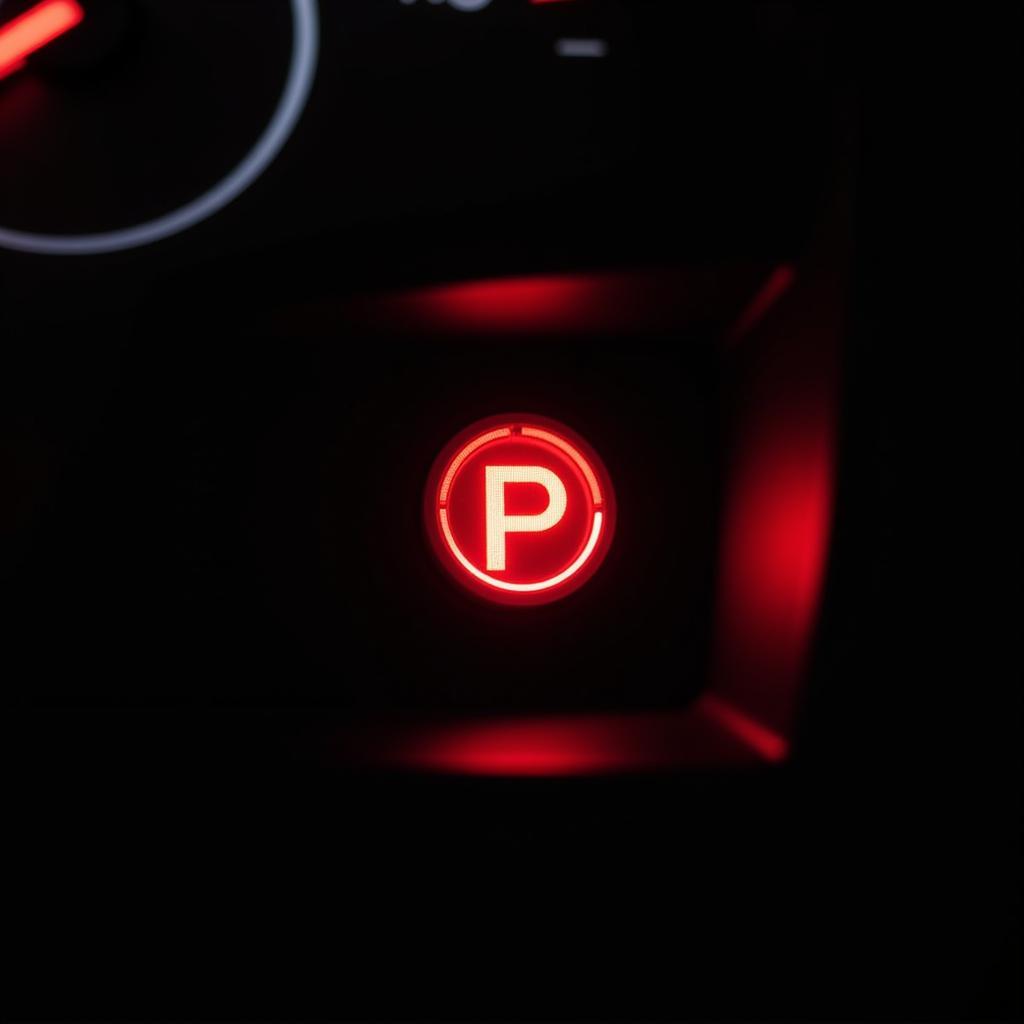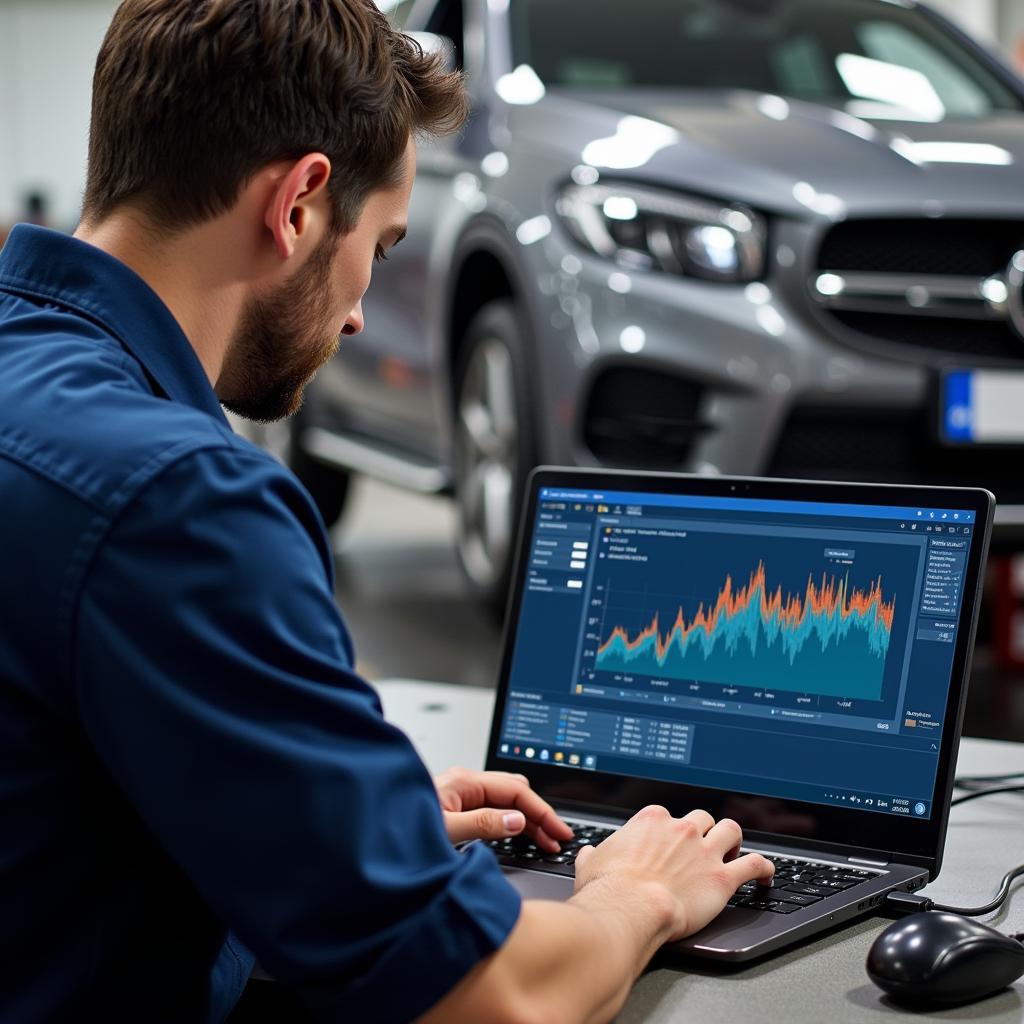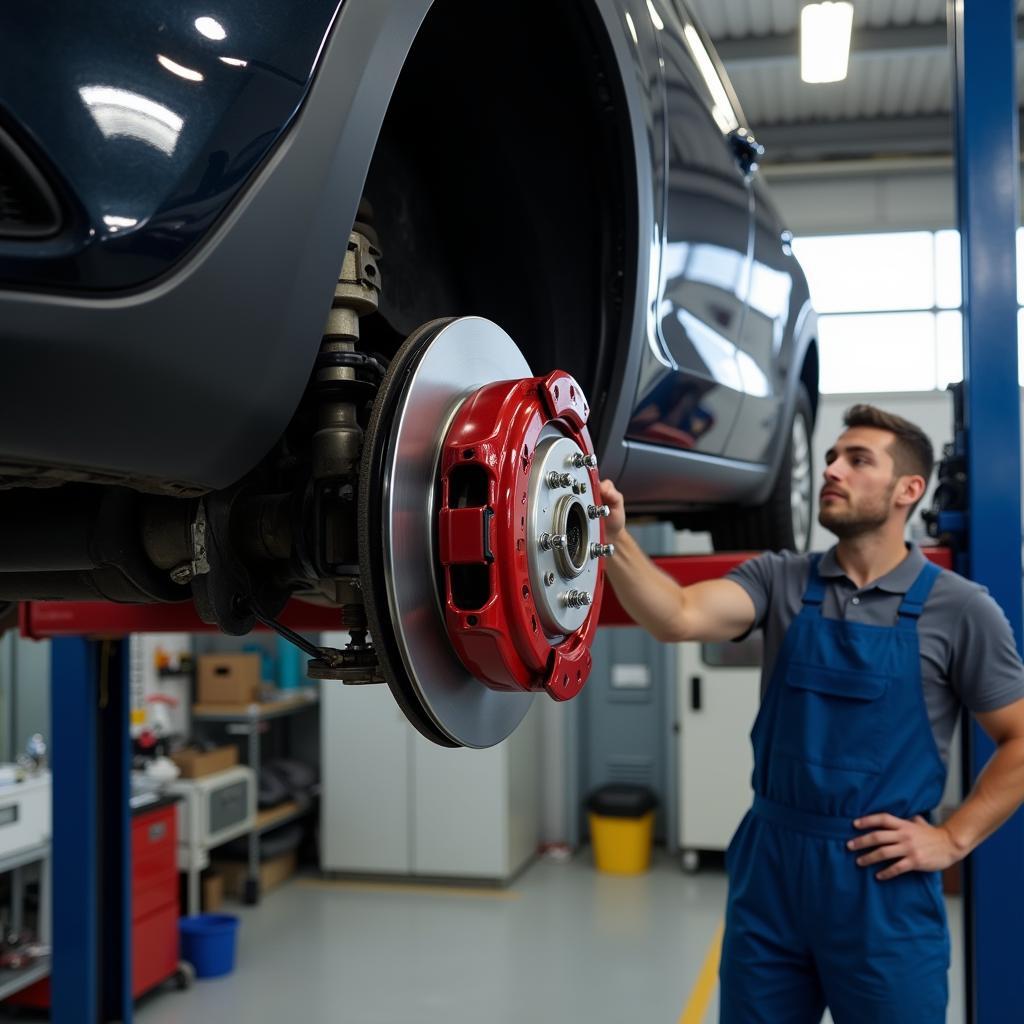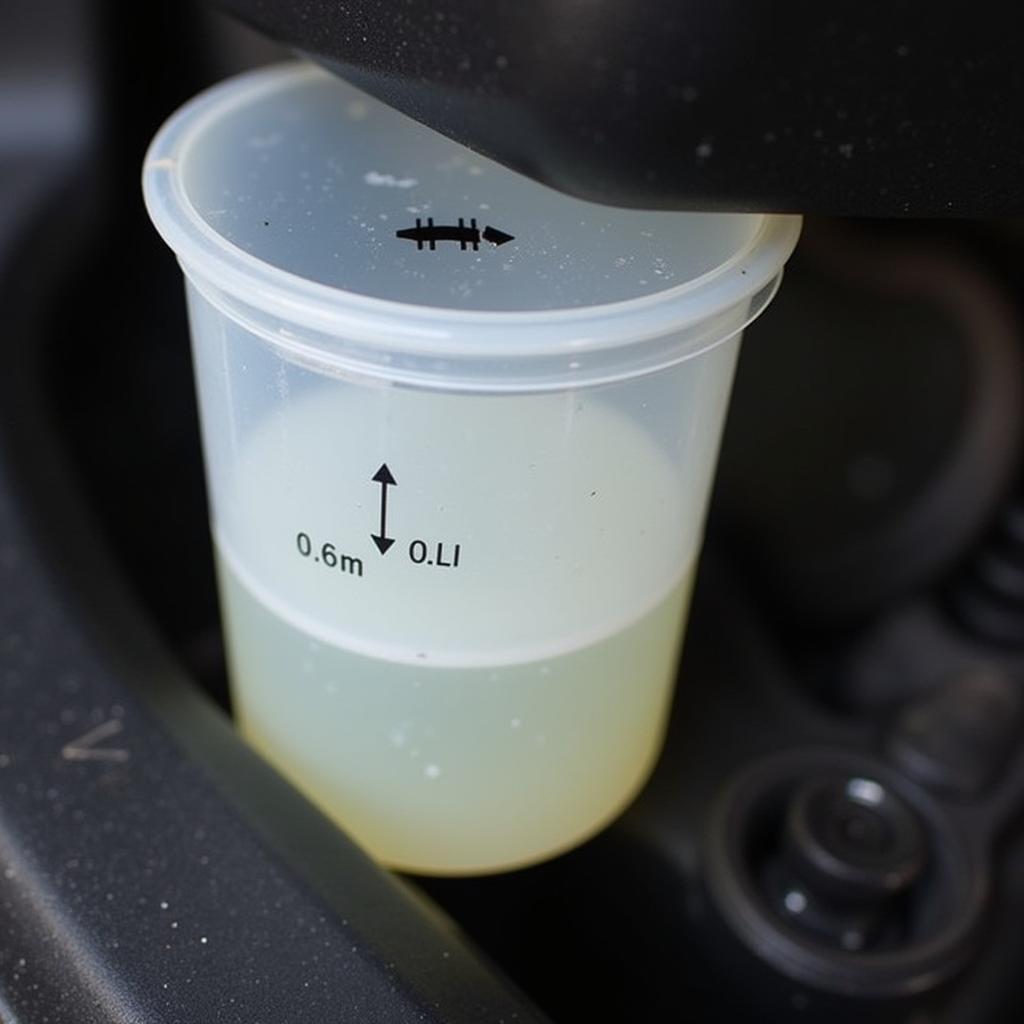A parking brake warning light on your dashboard can be an annoying distraction, but it’s often a sign of a crucial safety system needing attention. Understanding what triggers this warning and how to address it can save you from potential hazards and costly repairs. This comprehensive guide will delve into the common causes of a parking brake warning, offer practical solutions, and provide expert insights to help you navigate this common car issue.
Decoding the Parking Brake Warning Light
The parking brake warning light, typically depicted as a red circle with a “P” or an exclamation mark inside, serves as your car’s way of communicating a problem with the parking brake system. While it’s natural to assume the parking brake is simply engaged, the warning light can illuminate due to several reasons:
-
Engaged Parking Brake: The most straightforward reason is indeed an engaged parking brake. Always double-check that you’ve fully released the brake before driving.
-
Low Brake Fluid: Your car’s braking system relies on adequate brake fluid to function correctly. Low fluid levels, often caused by leaks or worn brake pads, can trigger the parking brake warning light.
-
Faulty Parking Brake Switch: The parking brake switch, responsible for signaling the light when the brake is engaged, can wear out or malfunction, causing the light to illuminate even when the brake is disengaged.
-
Worn Brake Pads: While not directly related to the parking brake, severely worn brake pads can sometimes trigger the warning light. This is because the brake system needs to work harder, potentially causing a drop in brake fluid pressure.
-
Electrical Issues: As with any electrical system in your car, wiring problems, a blown fuse, or a faulty sensor can disrupt the parking brake warning system.
 Parking brake warning light on car dashboard
Parking brake warning light on car dashboard
Troubleshooting a Parking Brake Warning
When your parking brake warning light illuminates, it’s essential to address the issue promptly. Here’s a step-by-step guide to help you troubleshoot the problem:
-
Check the Parking Brake: Begin with the obvious – ensure the parking brake is fully disengaged. Sometimes, the brake might not be fully released, or the mechanism could be slightly stuck.
-
Inspect Brake Fluid Levels: Locate the brake fluid reservoir under the hood (refer to your owner’s manual for the exact location). The reservoir will have “Min” and “Max” markings. If the fluid level is below the “Min” mark, add the appropriate brake fluid (check your owner’s manual for the recommended type).
-
Examine the Parking Brake Switch: The parking brake switch is usually located near the brake pedal. Inspect it for any visible damage or loose connections. If you suspect a faulty switch, consult a mechanic for replacement.
-
Assess Brake Pad Condition: Check the condition of your brake pads. If they appear significantly worn down or you hear a grinding noise when braking, it’s time for a replacement.
-
Seek Professional Help: If the warning light persists after performing these checks, it’s best to consult a qualified mechanic. They have the expertise and diagnostic tools to pinpoint the root cause and provide the appropriate solution.
Modern Solutions: Remote Diagnostics and Software
In today’s technologically advanced automotive landscape, remote diagnostics and software solutions have revolutionized car repair. Specialized technicians can now access your car’s computer system remotely, diagnose issues, and even reprogram certain components.
“Remote diagnostics can be incredibly valuable in identifying the cause of a parking brake warning,” says automotive electronics expert, David Miller. “We can access the car’s data logs, analyze sensor readings, and often pinpoint the problem without even needing the car physically present.”
This advanced technology offers numerous benefits, including faster diagnoses, reduced downtime, and the convenience of addressing certain issues remotely without visiting a mechanic.
 Mechanic using a laptop for remote car diagnostics
Mechanic using a laptop for remote car diagnostics
Preventing Future Parking Brake Issues
While some issues require professional attention, you can proactively prevent certain parking brake problems:
-
Regular Maintenance: Adhere to your car manufacturer’s recommended maintenance schedule. This includes regular brake inspections, fluid flushes, and timely replacement of worn components.
-
Avoid Riding the Parking Brake: Don’t drive with your parking brake partially engaged. This can overheat the brakes, cause premature wear, and potentially damage the parking brake system.
-
Be Mindful of Terrain: Parking on steep inclines frequently can put extra stress on your parking brake system. Whenever possible, park on level ground to minimize strain.
 Car on a lift in a mechanic shop, focusing on the braking system
Car on a lift in a mechanic shop, focusing on the braking system
FAQs: Addressing Common Concerns
Q: Can I drive with the parking brake warning light on?
A: While you might be able to drive short distances, it’s strongly advised against it. Driving with a potential brake issue compromises safety and can lead to further damage.
Q: How much does it cost to fix a parking brake warning light issue?
A: The cost varies depending on the underlying cause. A simple brake fluid top-up is inexpensive, while a faulty parking brake switch or brake pad replacement will be more costly.
Q: Can I reset the parking brake warning light myself?
A: While disconnecting the car battery might temporarily reset the light, it’s crucial to address the root cause. Attempting DIY fixes without proper knowledge can be risky.
Prioritizing Safety and Timely Action
A parking brake warning light, while seemingly minor, should never be ignored. By understanding its causes, employing basic troubleshooting, and seeking professional help when needed, you can ensure your safety and keep your car running smoothly. Remember, proactive maintenance and timely attention to warning signs are always the best ways to prevent costly repairs and ensure your peace of mind on the road.

